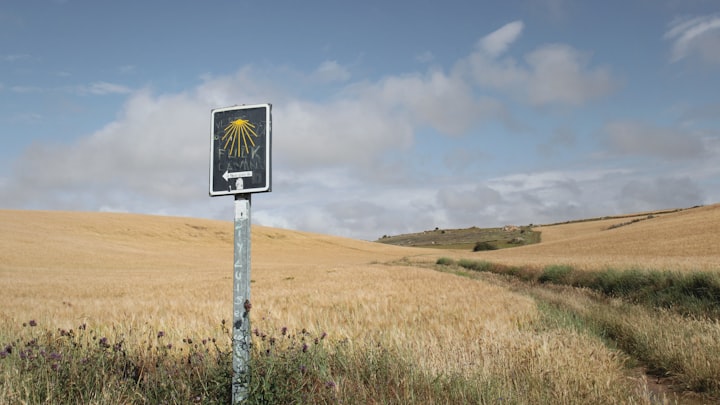Essentials to pack for the Camino route
Pack light, every ounce counts

The Camino de Santiago is one of the most popular hikes in the world. Hiking the Camino route can be a life-changing experience. And, if you want to make the most out of it, you need to be well prepared.
If you’ve been hiking before, you most likely already know that you need to pack just the essentials and leave the luxury behind. But, the Camino is a hiking adventure like no other. So, what exactly are the essentials for this ancient pilgrimage?
Credentials
Obviously, you need to bring your passport if you are headed to Spain. However, the Camino requires you to have another kind of passport—officially known as the Pilgrim’s Credential.
You can get your Camino passport at the pilgrim’s reception offices or at a few other places that are accredited to issue this credential, such as tourist offices, cathedrals, and pilgrim’s albergues (hostels).
If you want to stay in albergues, you will need to have a Camino passport. You also need a Camino passport to get the Compostela—a certificate that you have completed the pilgrimage.
You will use your Camino passport to collect stamps. To get the Compostela, you’ll need to get one or two stamps every day. You will also need to walk more than 60 miles on the Camino.
Travel Insurance
Whenever you go abroad, you need to get travel insurance. This especially goes for hiking holidays. The Camino is safer than most hikes since the terrain on the most traveled routes is relatively flat, but hiking and trekking are still high-risk activities.
Neck Bag, Cash, and Credit Cards
When walking the Camino, you will come across many cash-only businesses. Moreover, you may not be able to find an ATM in the remote sections of less popular routes.
You’ll be able to withdraw Euros at any ATM, but make sure to keep some cash on your person in case of an emergency. Take two types of credit or debit cards in case one gets rejected.
To keep your valuables safe, bring a neck bag. Many albergues don’t have lockers, and a neck back is a great way to protect your valuable stuff while you are sleeping. Still, just to be safe, don’t keep all of your money in one place.
Even though it’s a pilgrimage, and there aren’t that many stories about stealing on the Camino, it’s good to be careful. If a neck bag doesn’t work for you, a small, waterproof pouch can also be a good solution.
Backpacking Stove and Lightweight Camp Silverware
For most local restaurants, vegan food is a bit off-piste. If you don’t want to eat bananas and bread every day for a whole month, it’s a good idea to buy a backpacking stove and do some cooking of your own.
Luckily, the people of the Iberian Peninsula indeed know how to garden and grow, so be sure to bring a peeler and a grater as well. Don’t forget to pack a bowl and some cutlery, too.
It’s best to buy these items after you land at your destination, especially since European stove canisters use a different connection than the stoves in the US.
You’ll come across many fields of various produce on your journey. The local markets are filled with potatoes, olives, leeks, tomatoes, legumes, berries, and grapes. If you take matters into your own hands, you’ll be eating hearty homemade dishes every day.
Sleeping Bag
It’s best to bring your own sleeping bag because the blankets in most albergues are not much. If you’re hiking in summer months, a lightweight sleeping bag will do. Be sure to bring a warmer sleeping bag if you are hiking in winter because most places in Spain don’t have any sort of heating.
Backpack
Since most hiking backpacks are nylon-based and therefore generally vegan, finding a backpack to pack all of your essentials shouldn’t be a problem. However, it’s always best to go for something more eco-friendly.
When shopping for a pack, look for one that carries the bluesign label. It guarantees that greener textiles were used in the manufacturing process. Although they are not common, you can find polyester backpacks that are made from upcycled ocean plastic.
Patagonia is a good brand to go with since their fabrics have the bluesign label and they promote safe working conditions and fair labor practices. Patagonia’s Black Hole 32L backpack is a good choice if you plan to walk the Camino in the summer with just your bare essentials, or if you plan to have your luggage transported from albergue to albergue (costs about 5 Euros per day per backpack).
If you plan on carrying your laptop, camera, and other electronics, or if you plan on walking the Camino in early spring, late fall, or winter, it’s best to get a 50 L backpack. Make sure to get a rain cover for your backpack, or to buy a pack that already comes with one.
Clothes
You may need to wear up to three layers, depending on the season. But, no matter the season, your base layer should be made from breathable, moisture-wicking fabrics.
It’s best to go with clothes made of polyester. Polyester clothing will help you stay cool and dry in the summer and warm and dry in the winter.
Be sure to avoid cotton. Cotton doesn’t provide much insulation in the winter and it traps heat in summer. And, since it soaks up moisture, it becomes heavier as you sweat. To keep yourself dry in case of rain, be sure to bring a waterproof poncho.
Footwear
Running sneakers won’t do you much good on the Camino. You need proper hiking shoes. To avoid blisters, be sure to break in your shoes before you start your hike.
Hiking sandals can be a good alternative to hiking boots if you are walking the Camino in summer. Just be sure to wear socks. You’ll get blisters immediately if you try wearing them barefoot.
Flip-flops may not be an absolute must, but they will really come in handy in hostel showers. They will also cool your tired feet after a long day of hiking.
Reusable Water Bottle or Hydration Bladder
You’ll need to drink plenty of water on the Camino to stay properly hydrated, especially if you are going in the summer. Tap water in France, Portugal, and Spain is safe to drink, and there are plenty of drinking fountains along the major routes.
If you think it may not be to your taste, you can get a water filter. Be sure to bring a reusable water bottle or a hydration bladder.
A reusable water bottle is easier to use and takes up less room in your backpack, but you’ll have to stop more often for refills. A hydration bladder can hold much more water than a water bottle, but you can only use it if your backpack has a water bladder sleeve.
Emergency Kit
Bumps and bruises are expected when you are hiking every day. Bring a pre-made emergency kit. You can even make one yourself. Be sure to add plasters, bandages, antiseptic cream, sunscreen, pain killers, Imodium, and any personal medication you may be taking.
Power Adapter
Different countries use different types of outlets for their electronics. In Spain, Portugal, and France, they use the same 2 round pronged outlets. If you’re coming from outside Europe, the UK, or Ireland, you’ll need to bring the right kind of power adapter. It may be best to get a universal travel adapter.
Takeaway
When you’re packing for the Camino, try not to overdo it. Keep in mind—less is more. Don’t pack more than you can carry. These are all the essentials you need to have a wonderful experience on the Camino.
About the Creator
Leslie Gilmour
I write. I write a lot about travel, DIY, and sometime a little about my work.






Comments
There are no comments for this story
Be the first to respond and start the conversation.